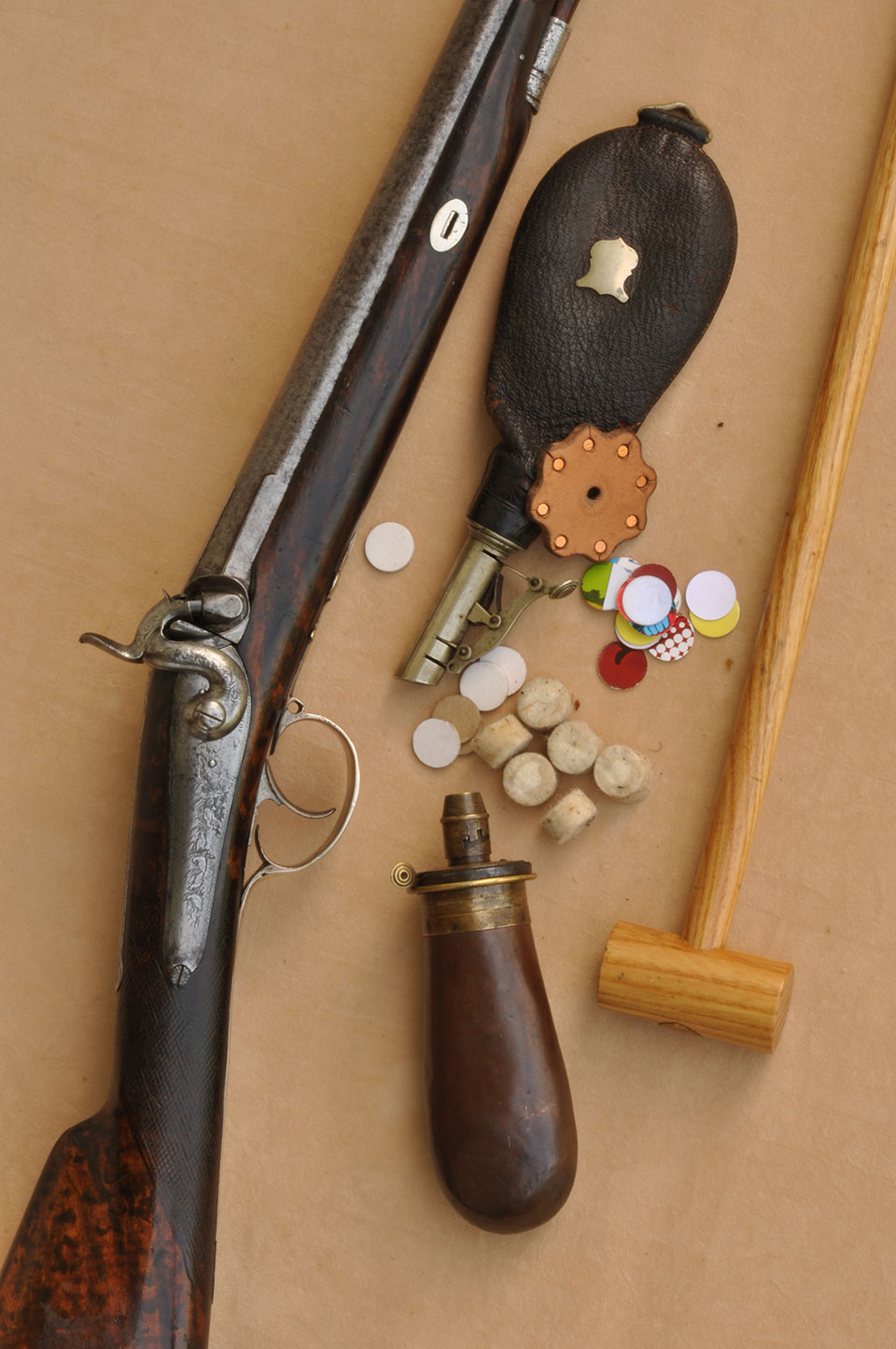 Many, I am sure, will not agree with this dictum and to them I will simply say, “You are missing part of the fun!”
Many, I am sure, will not agree with this dictum and to them I will simply say, “You are missing part of the fun!”
The little 16 bore muzzle loader illustrated, I submit, makes my point. At first glance it is a perfectly ordinary back-action lock, single-barrel, percussion ignition gun. Today it’s unremarkable, because guns of this specification were an industry standard in the latter half of the 19th century and indeed, as foreign imports, right up to the outbreak of World War II.
What sets this gun apart is not just its silver furniture, of which more anon, but a couple of clues that point to it being a very early example of this genre.
First, as always, is the name – John Thomson. Alas, no address is now visible. The reference books produce only one “hit”. In Scottish Arms Makers by Charles E. Whitelaw, are some brief but illuminating quotes from the Edinburgh street directories.
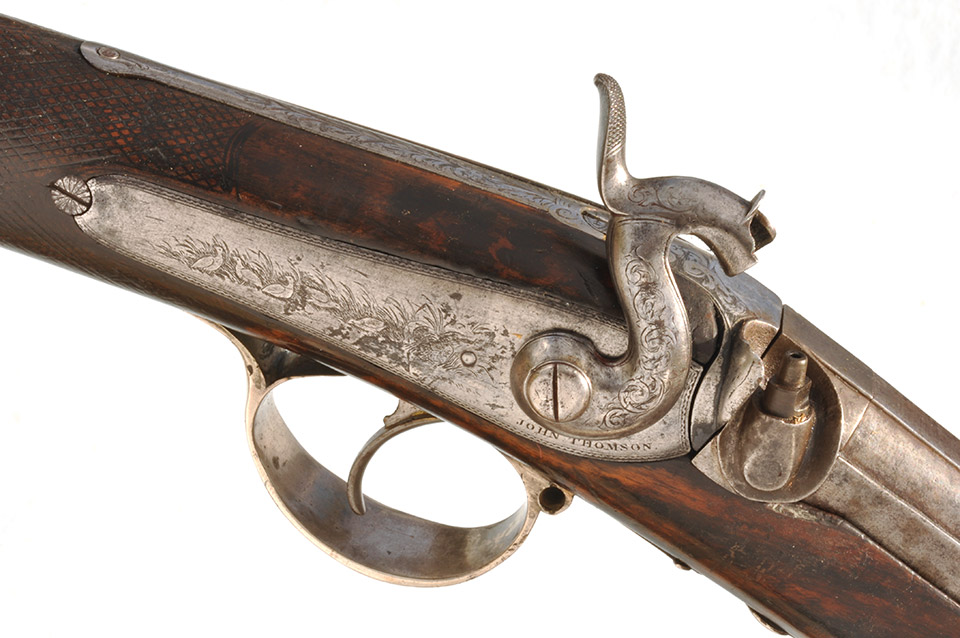
John had been apprenticed to James Innes, who held the title of “Gunmaker to His Majesty”. There is another note that John was “burgess in 1816”, presumably this marks the end of his apprenticeship. Then in 1820 he is listed as “successor to James Innes & Co.” at 14, Princes Street, Edinburgh. The entry for 182 includes the title “Gunmaker to His Majesty” when he is listed at 3, South St. Andrews Street. The next and last listing is in the directory of 1827.
From this it would seem that this little gun could not have been made later than the late 1820s. Significantly, the detail design of the lock reinforces this notion.
Received wisdom has it that the back-action lock on shotguns was a feature introduced and promoted by the gunmaking firm of W. & J. Rigby of Dublin. The first such lock noted in their records was sold in 1826.
So, putting this little gun in its true historical perspective, when built it was an example of the latest new thing. Not just for its lock design, “the detonator” as percussion ignition was then commonly called, had only come into what might be called wide usage in the season of 1817. Moreover, while the detonator had huge advantages, it did not immediately carry all before it. Authorities as prestigious as Col. Hawker expressed their reservations and high quality flintlocks were still being sold in the late 1820s. Just imagine the endless discussions round the table at gatherings of shooting men!
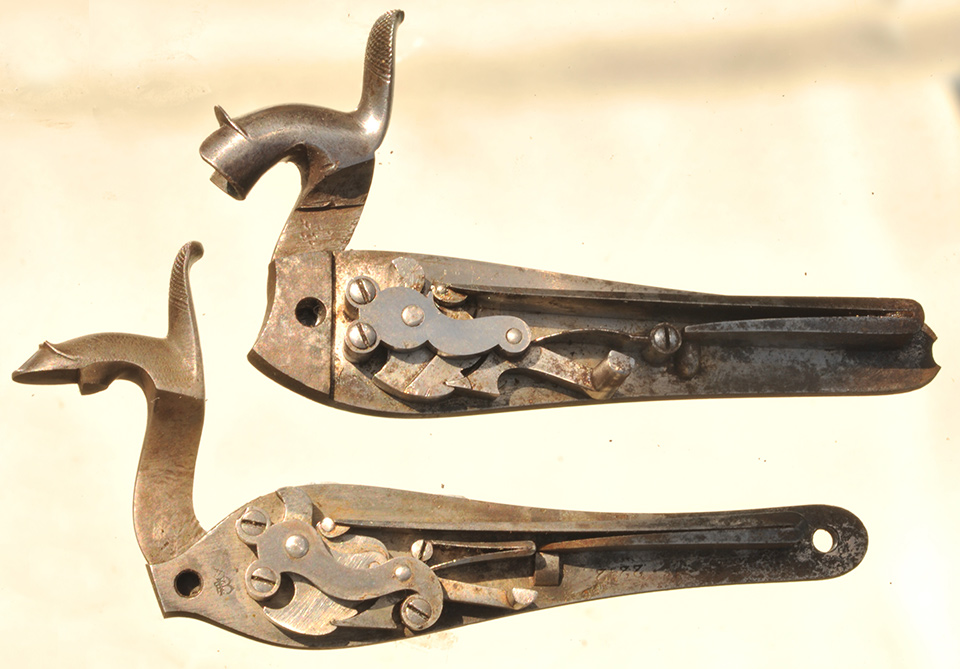
The lock and its detail design are interesting in their own right, the internals are best described and explained by way of a captioned illustration. How this is put together is also very different from later manifestations of this type. On the Thomson only three pins show on the external surface of the plate and two of these are hidden behind the hammer.
As a result, the engraver was presented with an almost blank surface and on this he created a naïve game scene of partridges in grassland, a border, but no scroll embellishments. To me this suggests a special order into which the customer had significant input.
So far I have said nothing about the most vital of all components – the barrel, which is thirty inches long, twist not Damascus, 16 bore and proofed in Birmingham. To date almost all who have seen it have said that it should not be rebrowned, because it would destroy the character of the gun. While I would love to see the figure of the barrel – well done it could be a joy – leaving it alone was my instinct too. That this view was almost universal is remarkable, perhaps a reaction to the poorly done, over-restoration of which we have all seen too much.
The fact that the barrel is a plain twist and not some sort of curly Damascus is a reminder that, in the late 1820s, the twisted barrel was itself a comparatively new development. Certainly it was a case of “work in progress”, because most of the really fancy patterns were yet to emerge.
That said, a well-made twist barrel is strong and what that does is to make safe the light muzzle end seen on this tube and, as a result, makes a very significant contribution to the lively handling character of this gun.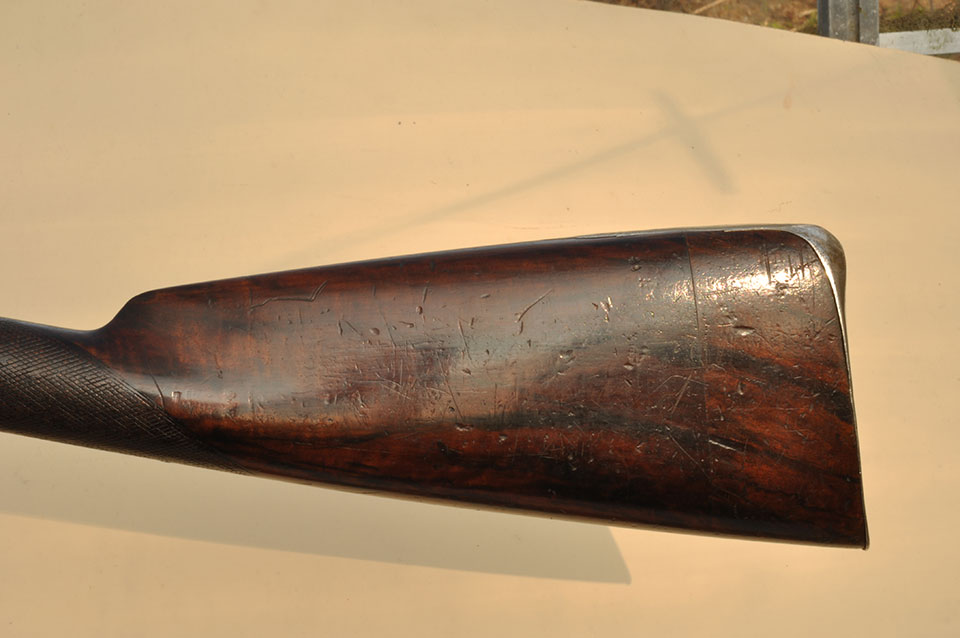
Even given all the points raised so far, what is the really remarkable feature of this gun for most folks is the silver furniture. Moreover, silver that has the London hallmarks for 1775, which, therefore, dates it to fifty years or so before this gun was built.
In addition to the hallmarks, which include the maker’s mark for John King, there is a tantalising partial inscription: “1 ? BATTᶰ R.A. REGT. K?” There is no way to be certain what this means, but the front runner explanation at the moment is “1st Battalion Royal American Regiment”. At the moment this is no more than a viable speculation. One hope of bringing this inscription to a wider audience is that more may emerge. Top of the wish list would be a complete fusil with a similar but complete inscription. That could prove the line to The Royal Americans, which was an unusual outfit, even in a context as diverse as The British Army.
So, this silverware was once fitted to an officer’s fusil and instantly we glimpse what was truly another world. A fusil was a light, better quality version of a flintlock musket and was the property of the officer who carried it. In that they were non-regulation weapons, there is remarkably little written about them. The basic specification was that they had to be “carbine bore”, that is to say 16 bore, have a 39 inch barrel and be stocked to the muzzle.
At this point we enter the realms of pure speculation. How did the gun that lies on my desk as I write this come to be created? The chronology would suggest that the silverware belonged to the generation of the grandfather of the man who commissioned it, so was it taken from an heirloom that had somehow been allowed to fall in decay?
Frustratingly, just one clue could unravel much of this story – a crest or even initials on an escutcheon would do – but we have none. I have even taken off the heel plate in the hope of finding a note tucked into a hole in the stock – but it was not to be!
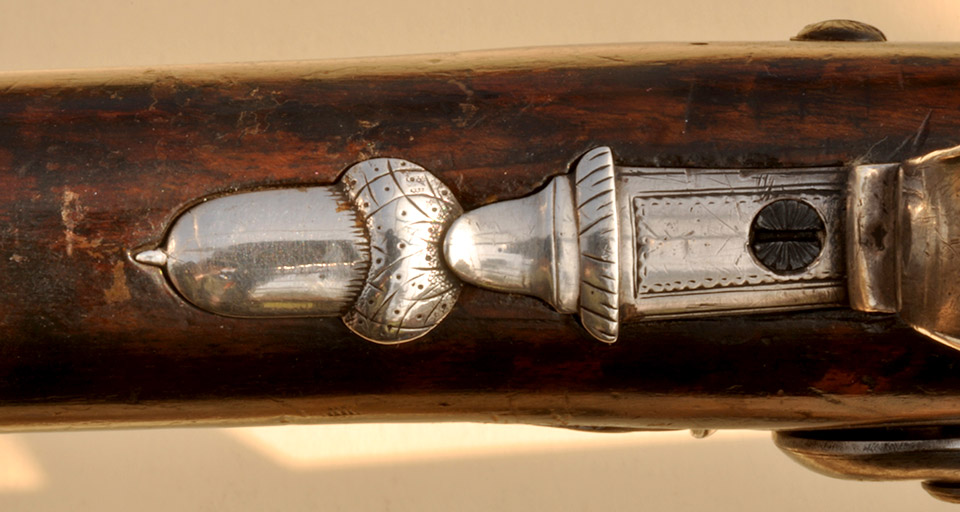
There is another point of interest about this gun that is also part of its unknown story. The stock has been shortened and then re-lengthened with the original piece of wood. Only then were the heel plate and side decoration added. Is this, and the fact that the gun has seen a lot of use, all part of one story? Was it a first gun that was never discarded as so many were, but rather one that saw a lifetime’s use. That would be a wonderful story – but who knows?
My theory is that it is a gun that has been tuned. Most significantly, the stock has been weighted with lead. How much it is impossible to say accurately without digging it out of X-raying the stock, but my guess is two or three ounces. This, along with the very tapered barrel, makes the gun “fast”. Just how muzzle light it is can best be expressed on paper by recording that the static point of balance is about one inch in front of the trigger guard. Add to this a light, crisp trigger pull and a gun that fires as sharp as any muzzle loader I have ever fired ……all this in a 5½ pound gun can, in the right circumstances, be a magic combination. Conversely, in other scenarios, these characteristics need careful management.
Experience thus far indicates that a ⅞oz shot charge with a lightish powder charge is a very comfortable load. The shooting experience suggests a gun with real possibilities – light for an old man to carry and perhaps a gun to consider very seriously for field shooting, there being no doubt that most of the dangers of muzzle loading derive from that second barrel.
Moreover, the silverware would surely be an ice breaker and a conversation topic in strange company.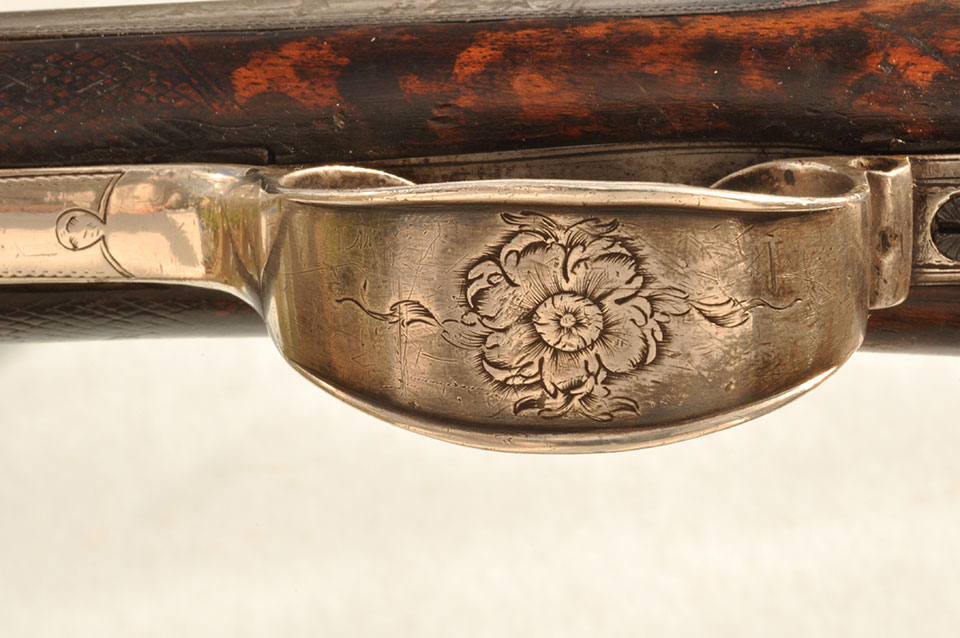
For the fireside, somewhere I am sure there will be some account of The Royal Americans – on this last point I would value any suggestions.
By a curious coincidence, while this piece was in process, a group of friends met at The Dovey Valley Shooting Ground for an informal and most enjoyable black powder shoot. Among the guns brought along was what is now a single barrel, percussion ignition gun. However, this had once been a flintlock fusil, made by the famous John Twigg. Part of what had been retained was the silver furniture hallmarked for 1774.
Published by Vintage Guns Ltd on (modified )




